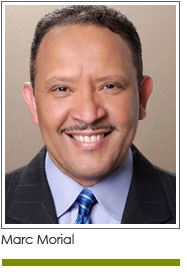 “I see each prison cell as very valuable real estate that ought to be occupied by individuals who pose the greatest threat to public safety. In my opinion, under our current system, too many relatively low-level drug offenders are locked up for 5, 10, and 20 years when lesser sentences would, in all likelihood, more than satisfy the legitimate penological goals of general deterrence, specific deterrence, and retribution.” – John Malcolm, Director of the Edwin Meese III Center for Legal and Judicial Studies, Heritage Foundation
“I see each prison cell as very valuable real estate that ought to be occupied by individuals who pose the greatest threat to public safety. In my opinion, under our current system, too many relatively low-level drug offenders are locked up for 5, 10, and 20 years when lesser sentences would, in all likelihood, more than satisfy the legitimate penological goals of general deterrence, specific deterrence, and retribution.” – John Malcolm, Director of the Edwin Meese III Center for Legal and Judicial Studies, Heritage Foundation
Let’s get this straight.
Advocating for a smarter and fairer criminal justice system that strives to apply balance in sentencing and uses sensible, public-safety based practices to reduce our nation’s ever ballooning prison population does not mean that you are soft on crime, or that you stand against law enforcement—or law enforcers. It means that the problems, challenges and clear disparities that run rampant throughout our nation’s criminal justice system have given serious pause to people across the political spectrum, who recognize that our nation’s blind, prison-centered approach to all crime comes at a great economic and social cost. Those who would characterize this movement for change as a campaign against law enforcement have missed the point—this is a campaign for fairness in law enforcement.
Heather Mac Donald’s Wall Street Journal op-ed, “Obama’s Tragic Let ’em Out Fantasy,” clearly missed the point.
Early on in the piece, Mac Donald admits that, “there may be good reasons for radically reducing the prison census and the enforcement of criminal laws.” What she takes issue with are “the arguments advanced in favor of that agenda,” branding them as “deceptive.” While Mac Donald is entitled to her own opinions, she is not entitled to her own facts. According to the latest statistics from the United States Sentencing Commission, drug trafficking accounted for 30 percent of all federal offenses in 2013. In that same year, people of color, mostly men, made up 75 percent of those incarcerated for drug trafficking, while white drug traffickers accounted for 22 percent. It is also important to note that the race of the offenders varied “substantially across different drug types.” Almost half of all drug traffickers had little or no prior criminal history, yet most—over 96 percent—were locked up. On the state level (in 2014) 16 percent of its prisoners were serving sentences for drug offenses. According to National Prisoner Statistics, Black men had the highest imprisonment rate and were in state or federal facilities 4 to 10 times more when compared to white men and 1 to 3 times more often when compared to Hispanic men.
Mac Donald also fears that “nonstop pressure from the Black Lives Matter movement,” among other things, will push our nation into a criminal justice “experiment” that will endanger the lives and property of law abiding citizens. This would suggest that citizens have no right to scrutinize law enforcement, or protest when law enforcement fails to protect the communities it is sworn to serve and protect. Protest is not a crime and this “us versus them” narrative is a dangerous one that tears us apart, rather than build consensus on the pressing issue of criminal justice reform—a need that even Mac Donald can agree on.
Mac Donald pointed to the recent, tragic death of New York City police officer Randolph Holder at the hands a man with a long history of arrests as a heart-rending example of the challenges that lie ahead as our nation moves to provide relief to offenders who received unduly harsh prison sentences and reduce the dangerous level of overcrowding in our prisons. She is right that alternatives to incarceration can only work with far tighter screening and supervision. All law-abiding citizens and officers of the law deserve a system of justice that makes public-safety the first priority.
We need to do more than rely on prisons. Even Mac Donald suggests that, “a more promising alternative to incarceration is policing.” While she advocates pedestrian stops and Broken Windows policing, the National Urban League has developed a “10 Point Justice Plan” that recommends a new model of policing that eliminates Broken Windows—by extension reducing the distrust between police officers and the communities they serve—and replacing it with initiatives that focus attention and resources on the most significant and severe crimes. We also advocate new methods that promote a community-policing model of law enforcement.
There are criminals who present such a risk to society that they must be, and remain, incarcerated, but there are also thousands—who are non-violent or first time offenders—who can be successfully rehabilitated and reintegrated back into society. Mass incarceration overpopulates our prisons and can even become a school for low-risk offenders and foster more crime. It destroys families and often destroys opportunity after time has been served.
“Rather than lock everyone up, burdening the taxpayers and snuffing out hope, we should give non-violent offenders a hand up before they even see the inside of a jail cell. Rather than lock everyone up, let’s build a criminal justice system based on just that: justice—for all.”
Marc Morial is the president and CEO of the National Urban League.












